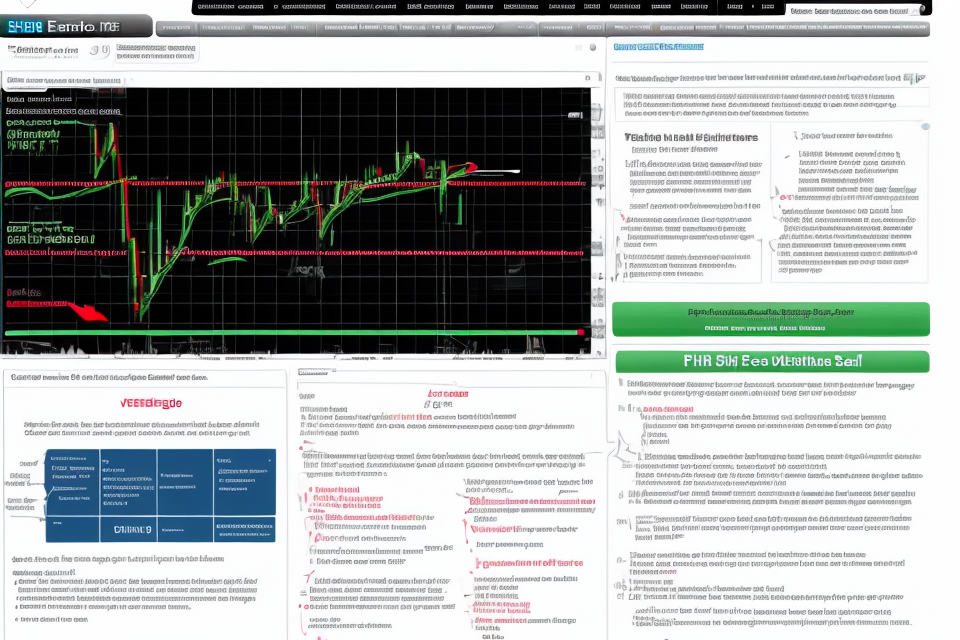
Are you looking for a safe and secure way to invest in the stock market? If so, you’re in luck! In this article, we’ll explore the safest stock investment strategy that can help you minimize risk and maximize returns. We’ll cover everything from the basics of stock investing to advanced strategies that can help you build a solid portfolio. So, whether you’re a beginner or an experienced investor, read on to discover the safest stock investment strategy that’s right for you.
The safest stock investment strategy is a topic of debate among financial experts, as different approaches work for different individuals based on their risk tolerance, investment goals, and time horizon. However, a common recommendation is to diversify your portfolio by investing in a mix of low-risk securities such as bonds, index funds, and real estate investment trusts (REITs). It’s also essential to have an emergency fund in place to cover at least six months of living expenses in case of unforeseen circumstances. Regularly reviewing and rebalancing your portfolio can help maintain the desired risk level and ensure your investments align with your goals.
Understanding Stock Investment Strategies
Different types of stock investment strategies
There are various stock investment strategies that investors can adopt to achieve their financial goals. Here are some of the most common types of stock investment strategies:
- Growth Investing: Growth investing is a strategy that focuses on buying stocks of companies that have the potential to grow at a faster rate than the market average. Investors using this strategy are willing to pay a higher price for a stock if they believe that the company’s earnings will grow significantly in the future.
- Value Investing: Value investing is a strategy that involves buying stocks of companies that are undervalued by the market. Investors using this strategy look for companies with low price-to-earnings ratios, high dividend yields, or other financial metrics that suggest the stock is cheap compared to its intrinsic value.
- Dividend Investing: Dividend investing is a strategy that focuses on buying stocks of companies that pay regular dividends. Investors using this strategy aim to generate a steady stream of income from their investments, rather than capital gains.
- Index Investing: Index investing is a strategy that involves buying a basket of stocks that mirrors a particular stock market index, such as the S&P 500. Investors using this strategy aim to match the performance of the market, rather than trying to beat it through stock picking or market timing.
- Day Trading: Day trading is a strategy that involves buying and selling stocks within the same day, with the aim of making a profit from short-term price movements. Investors using this strategy need to be able to identify trends and patterns in the market, and be able to make quick decisions based on those observations.
Importance of choosing the right strategy
When it comes to investing in stocks, choosing the right strategy is crucial to achieving your financial goals. The wrong strategy can lead to significant losses and may even derail your plans to invest in stocks altogether. Here are some key reasons why choosing the right strategy is so important:
Understanding your investment goals
Before you can choose the right stock investment strategy, you need to understand your investment goals. Are you looking to grow your wealth over the long term, or do you have a short-term investment horizon? Your investment goals will help determine the type of stock investment strategy that is best suited for you.
Risk tolerance
Your risk tolerance is another important factor to consider when choosing a stock investment strategy. Some investors are comfortable taking on a higher degree of risk in pursuit of higher returns, while others prefer a more conservative approach that prioritizes capital preservation. It’s important to choose a strategy that aligns with your risk tolerance level.
Diversification
Diversification is a key principle of successful stock investing. By spreading your investments across a variety of different stocks, sectors, and asset classes, you can reduce your exposure to any one particular risk. This can help you achieve a more stable return on your investments over time.
Long-term vs short-term investment goals
Finally, your investment horizon can also play a role in determining the right stock investment strategy for you. If you have a long-term investment horizon, you may be more willing to take on a higher degree of risk in pursuit of higher returns. On the other hand, if you have a short-term investment horizon, you may want to focus on preserving your capital and avoiding unnecessary risks.
Analyzing Safe Stock Investment Strategies
Growth investing
Growth investing is a stock investment strategy that involves investing in companies with high growth potential. This strategy focuses on identifying companies that have the potential to outperform the market in the future. Growth investing is a long-term investment strategy that can be riskier than other strategies, but it can also provide higher returns.
To identify companies with high growth potential, growth investors typically look for companies that have strong fundamentals, such as a high level of revenue growth, a growing market share, and a strong competitive position. These companies are often in the technology, healthcare, or consumer discretionary sectors.
One popular approach to growth investing is to look for companies with a high price-to-earnings (P/E) ratio, which indicates that the market has high expectations for the company’s future growth. However, it’s important to note that a high P/E ratio can also indicate that a company’s stock is overvalued, so investors should be cautious when using this approach.
Another approach to growth investing is to look for companies with a high return on equity (ROE), which indicates that the company is effectively using its shareholder’s funds to generate profits. Companies with a high ROE are often well-managed and have a strong track record of profitability.
It’s important to note that growth investing can be riskier than other investment strategies, as it involves investing in companies with high growth potential, which can be more volatile than established companies. Therefore, investors should be prepared to accept a higher level of risk when investing in growth stocks.
In summary, growth investing is a stock investment strategy that involves investing in companies with high growth potential. This strategy focuses on identifying companies with strong fundamentals, such as a high level of revenue growth, a growing market share, and a strong competitive position. Growth investing can be riskier than other strategies, but it can also provide higher returns.
Value investing
Value investing is a stock investment strategy that involves investing in undervalued companies. This means buying stocks of companies that are trading at a lower price than their intrinsic value. The idea behind this strategy is that over time, the market will eventually recognize the company’s true value, leading to an increase in stock price.
One of the benefits of value investing is that it can provide steady returns over time. This is because the stocks of undervalued companies have the potential to rise in value, which can result in higher returns for investors. Additionally, value investing can be a lower-risk investment strategy as it involves investing in companies that are considered to be stable and have a low risk of failure.
Value investing can also be a long-term investment strategy, as it involves holding onto stocks for an extended period of time. This can help investors to benefit from the compounding effect of investment returns over time.
However, it is important to note that value investing does come with some risks. It requires a thorough understanding of the market and the ability to identify undervalued companies. Additionally, it is possible for a company’s stock price to remain low even if its intrinsic value is high, which can result in losses for investors.
Overall, value investing can be a safe stock investment strategy for those who are willing to take the time to research and understand the market. By investing in undervalued companies, investors can potentially earn steady returns over time and benefit from the compounding effect of investment returns.
Dividend investing
Dividend investing is a popular stock investment strategy that involves investing in companies that pay dividends. These dividends provide a steady income stream for investors, making this strategy an attractive option for those looking for a safe and reliable investment.
In this section, we will discuss the key features of dividend investing and how it can be a safe stock investment strategy.
- Investing in companies that pay dividends
Dividend investing involves investing in companies that have a history of paying dividends. These companies are typically mature and stable, with a strong financial position and a consistent track record of profitability. By investing in these companies, investors can benefit from the regular dividend payments they receive, which can provide a steady income stream.
- Provides a steady income stream
One of the main advantages of dividend investing is that it provides a steady income stream. Dividend payments are made regularly, typically on a quarterly basis, and can provide a consistent source of income for investors. This can be particularly attractive for those looking for a safe and reliable investment, as it provides a regular income stream that is not dependent on the stock market’s performance.
It’s important to note that not all companies pay dividends, and the amount and frequency of dividend payments can vary. Therefore, it’s important to conduct thorough research and analysis before investing in a company that pays dividends. This includes analyzing the company’s financial statements, dividend history, and overall market conditions.
Another factor to consider when investing in dividend-paying companies is the impact of taxes. Dividend payments are taxed as ordinary income, which means they are subject to federal income tax and potentially state and local taxes. It’s important to consider the tax implications of dividend investing and consult with a tax professional if necessary.
In summary, dividend investing can be a safe and reliable stock investment strategy for those looking for a steady income stream. By investing in companies that have a history of paying dividends, investors can benefit from regular income payments that are not dependent on the stock market’s performance. However, it’s important to conduct thorough research and analysis before investing and to consider the tax implications of dividend investing.
Index investing
Investing in a diversified portfolio of stocks is one of the safest strategies for stock investment. This approach provides exposure to a broad range of companies, reducing the risk associated with investing in individual stocks. Here are some key points to consider when it comes to index investing:
- Investing in a diversified portfolio of stocks: By investing in a diversified portfolio of stocks, you can spread your risk across a range of companies, reducing the impact of any one company’s performance on your overall investment.
- Provides exposure to a broad range of companies: Index funds track a specific market index, such as the S&P 500, which includes a broad range of companies. This means that you can get exposure to a diversified portfolio of stocks without having to pick and choose individual stocks.
- Lower costs: Index funds typically have lower expense ratios than actively managed funds, which means you can keep more of your returns.
- Passive management: Index funds are passively managed, meaning they track a specific index rather than being actively managed by a fund manager. This can result in lower costs and less risk of underperformance.
- Tax efficiency: Index funds are typically more tax-efficient than actively managed funds because they have lower turnover rates, which means they generate fewer capital gains distributions.
Overall, index investing is a safe and low-risk investment strategy that can provide diversification and long-term growth potential.
Day trading
Day trading is a popular stock investment strategy that involves buying and selling stocks within a single trading day. This strategy is considered high risk, high reward, and requires careful analysis and execution.
Here are some key points to consider when it comes to day trading:
- Frequent trades: Day traders typically make multiple trades in a single day, buying and selling stocks quickly in an attempt to profit from short-term price movements.
- Technical analysis: Day traders often use technical analysis to identify patterns and trends in stock prices, and make decisions based on these observations. This involves using tools such as charts and indicators to identify potential entry and exit points for trades.
- Risk management: Given the high level of risk involved in day trading, it is essential to have a solid risk management strategy in place. This may include setting stop-loss orders to limit potential losses, and diversifying investments across multiple stocks and sectors.
- Time commitment: Day trading requires a significant time commitment, as traders need to constantly monitor the market and make quick decisions based on changing conditions.
- Education and experience: To be successful in day trading, it is important to have a solid understanding of the stock market and trading strategies. This may involve extensive education and training, as well as hands-on experience with different trading platforms and tools.
While day trading can be a lucrative investment strategy for experienced and knowledgeable traders, it is important to understand the risks involved and approach it with caution.
FAQs
1. What is the safest stock investment strategy?
The safest stock investment strategy is a subjective matter and depends on various factors such as risk tolerance, investment goals, time horizon, and financial situation. However, diversification is generally considered as the safest strategy as it spreads the investment across different asset classes and sectors, reducing the risk of loss from any one investment. It is also important to have a long-term perspective, stay informed about the market and economic conditions, and seek professional advice if necessary.
2. What are the risks associated with stock investments?
Stock investments involve risks such as market risk, liquidity risk, interest rate risk, credit risk, and political risk. Market risk refers to the risk of loss due to fluctuations in the market value of securities. Liquidity risk refers to the risk of loss due to the inability to sell securities quickly at a fair price. Interest rate risk refers to the risk of loss due to changes in interest rates. Credit risk refers to the risk of loss due to the failure of a company or issuer to fulfill its financial obligations. Political risk refers to the risk of loss due to changes in government policies or economic conditions.
3. How can I minimize the risks associated with stock investments?
There are several ways to minimize the risks associated with stock investments. One way is to diversify your portfolio by investing in a mix of stocks, bonds, and other assets. This can help reduce the impact of any one investment on your portfolio. Another way is to invest for the long-term and avoid making emotional decisions based on short-term market fluctuations. It is also important to stay informed about the market and economic conditions, and seek professional advice if necessary. Additionally, having an emergency fund in place can help mitigate the impact of any unforeseen events on your investment portfolio.

